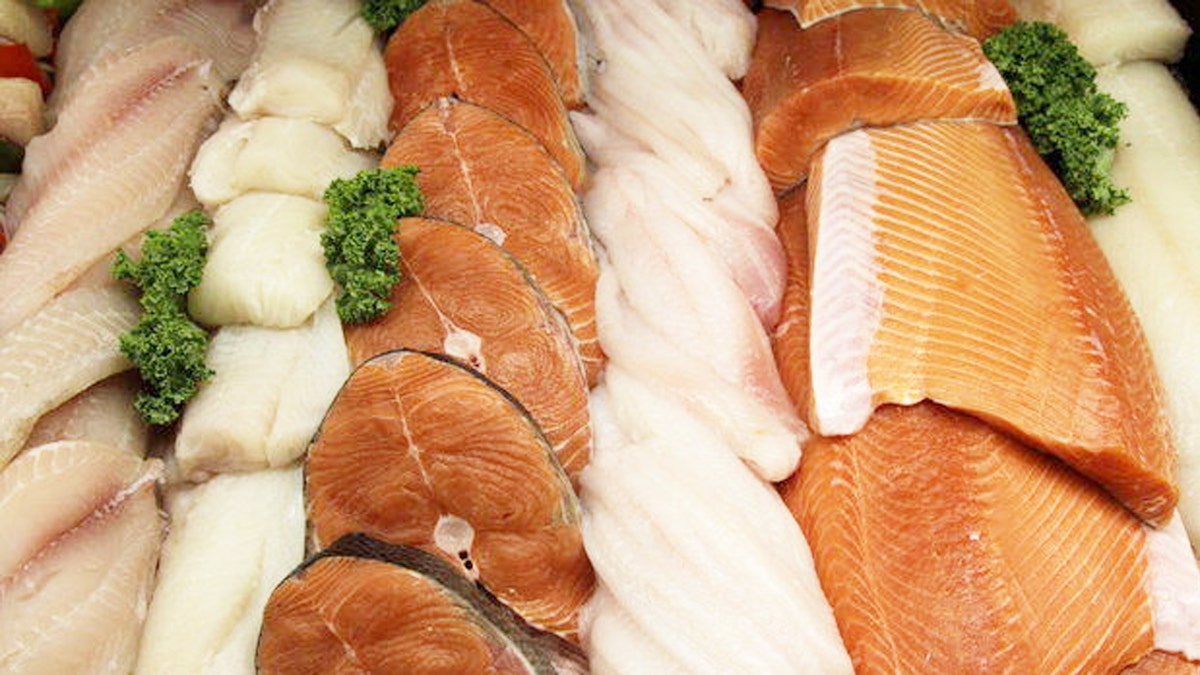
That wild caught salmon may actually be farmed. (AP Photo)
With more awareness about sustainable seafood, consumers are paying more attention to the type of fish they buy.
But even if you’re trying to do the right thing, a new study has confirmed that what you pay for isn’t necessarily what you get.
Oceana, an environmental group that works to protect and restore oceans around the globe, collected 82 samples of salmon from restaurants and grocery stores in Chicago, Washington, D.C., New York and Virginia and found that 43 percent were somehow labeled incorrectly. After performing DNA analysis, scientists found that the majority of mislabeling cases—69 percent—were farmed Atlantic salmon being sold as wild caught.
“When consumers opt for wild-caught U.S. salmon, they don’t expect to get a farmed or lower-value product of questionable origins,” said Beth Lowell, senior campaign director at Oceana. “This type of seafood fraud can have serious ecological and economic consequences. Not only are consumers getting ripped off, but responsible U.S. fishermen are being cheated when fraudulent products lower the price for their hard-won catch.”
Other cases mislabeling included samples that were labeled as a specific type of salmon, like Chinook, but DNA testing revealed them to be a different species—“in most cases lower-value fish.”
For this study, Oceana collected samples during the winter of 2013-2014. The findings differ greatly from the organizations previous study of wild caught salmon in 2012 with just 7 percent of salmon was incorrectly labeled during the “plentiful fishing season.” Also when you eat is likely to have a major impact on what you’re getting.
"Eat your salmon in season," Dr. Kimberly Warner, senior scientist at Oceana and one of the writers of the study, told USA Today.Wild salmon is generally in season from May through September.
"Time of year makes such a big difference on whether salmon mislabeling is high or low."
According to AboutSeafood.com, salmon is America’s second most popular seafood—after shrimp. Though consumers are looking to buy more local and natural foods, when it comes to seafood—the path from ocean to plate isn’t so clear cut.
“While U.S. fishermen catch enough salmon to satisfy 80 percent of our domestic demand, 70 percent of that catch is then exported instead of going directly to American grocery stores and restaurants,” said Warner. Most wild caught fish is actually processed overseas where labor is cheaper.
“It’s anyone’s guess how much of our wild domestic salmon makes its way back to the U.S. after being processed abroad. Without traceability, it is nearly impossible to follow the fish from the farm or fishing boat to the dinner plate. What we end up eating is mostly cheaper, imported farmed salmon, sometimes masquerading as U.S. wild-caught fish.”
Oceana is pushing for the federal government to impose greater regulation on the seafood industry when it comes to labeling practices, as well as traceability of exports and imports, so consumers can make informed decisions.
